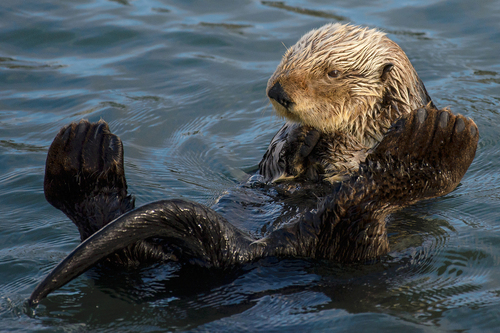
Sea Otter
Enhydra lutris, the playful sea otter, thrives in Pacific coastal waters. Known for its dense fur and tool-using skills, this marine mammal adeptly cracks shellfish with rocks. Its playful nature and role in maintaining kelp forest ecosystems highlight its ecological importance and captivating charm.
12-15 years
Lifespan
14.0 - 45.0 kg
Weight
Brown, Black, Tan
Color
7 mph
Top Speed
Endangered
Conservation Status
Decreasing
Population Trend
Characteristics
The sea otter (Enhydra lutris) is a marine mammal native to the coasts of the northern and eastern North Pacific Ocean. It has a thick, insulating fur, which is the densest of any animal. Sea otters are known for their playful behavior and use of tools, such as rocks, to crack open shellfish.
Distribution Range of the Sea Otter
The sea otter (Enhydra lutris) is native to the coastal regions of the northern and eastern North Pacific Ocean. Its range includes the coasts of the United States, particularly Alaska and California, and extends to Canada, Russia, and Japan. Historically, their range was broader, but due to past hunting pressures, the current distribution is more fragmented.
Sea Otter's Habitat
Environmental Conditions
Sea otters primarily inhabit nearshore environments where they can find abundant resources and protection. These areas include rocky coastlines, kelp forests, and estuaries. The climate in these regions is typically mild, with cool waters that are rich in marine life. Sea otters are known to prefer waters less than 40 meters deep, as they are adept divers.
Ecological Niche
Sea otters play a crucial ecological role as a keystone species in their habitat. They maintain the balance of the kelp forest ecosystems by preying on sea urchins, which in turn helps prevent overgrazing of kelp forests. This activity supports the biodiversity of the marine environment by maintaining the structure and health of these critical habitats.
Copyright @ Nature Style Limited. All Rights Reserved.
 English
English